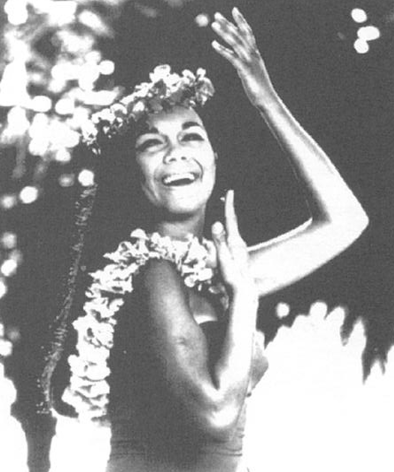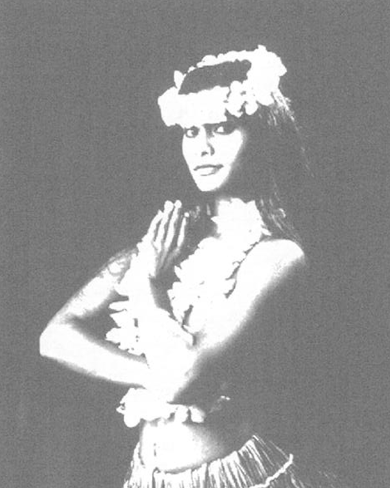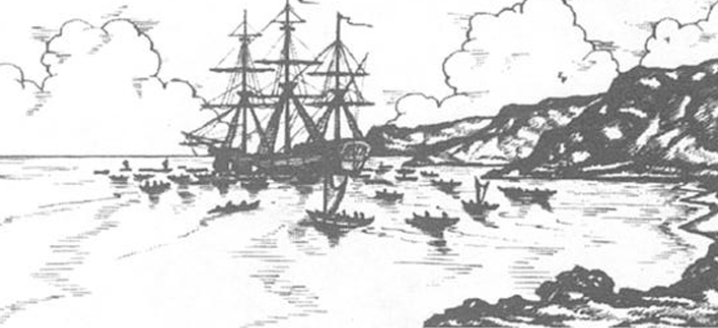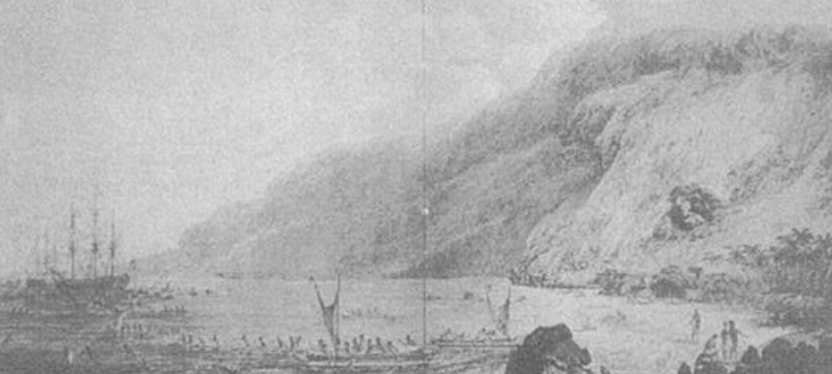Bella Soluri and Newton Wainscott
Introduction
Particularly outside of academic circles, Hawaii is rarely considered in regards to its colonial past. While this is a long standing struggle within the United States of America, Hawaii is particularly vulnerable to this type of historical oversight, primarily due to centuries of supplantion of indigenous thought and reality with misinformation regarding the colonial past and present of the islands. As Eve Tuck and K. Wayne Yang say, “neither external nor internal colonialism adequately describe the form of colonialism… in which the colonizer comes to stay” (Tuck and Yang 2012). Due to the permeance of colonialism in Hawaii, the island faces a unique situation regarding how to proceed with decolonial efforts and enter a postcolonial era.
A Brief Colonial History of Hawaii
Prior to European intervention, Hawaii had created a complex culture, providing “cultural stability and self-sufficiency” (McCubbin and Marsella 2009, 377) for 400,000 to 875,000 Hawaiians. Kapu, Hawaii’s system of order and governance, was key in keeping peace and order whilst providing subsistence for native peoples. Generally, Hawaiian culture is best understood as intimately intertwining body, spirit, and mind, while simultaneously placing high importance on the preservation of and harmony with nature. When James Cook arrived in 1778, description of Hawaii starkly opposed the actual culture: Europeans depicted the native people as “friendly and hospitable” (McCubbin and Marsella 2009), a characterization that continues into today, but also as villains, savages, and creatures, with John Meares noting that they had a “propensity toward thievery” (as cited in McCubbin and Marsella 2009). Soon after Cook’s arrival, disease proliferated throughout the islands, significantly reducing the population of the native Hawaiians, despite the creation of a Hawaiian monarchy in 1810. In 1853, their numbers had been reduced to a mere 84,000. American minister Rufus Anderson compared this mass death to “the amputation of diseased members of the body” (as cited in McCubbin and Marsella 2009). Christian missionaries like Anderson continued traveling to the islands, further contributing to the destruction of native culture. Eventually, in 1893, the American Minister to Hawaii invaded the sovereign nation and overthrew Queen Liliuokalani without government permission. While this action was publicly denounced by President Cleveland, Hawaii was still annexed in 1898 “without a single Native Hawaiian vote” (McCubbin and Marsella 2009, 378). Once Hawaii officially became a state in 1959, the economy began to shift away from prior agricultural endeavors into tourism.
Modern Hawaiian Tourism: Beneficial or Detrimental?
Hawaii’s reliance on tourism, primarily from U.S. citizens due to reduced barriers resulting from statehood, has become more of a contentious subject after the COVID-19 pandemic. COVID had a profound effect on Hawaii’s economy, as over 17% of Hawaii’s economy revolves around tourism, which almost completely halted with the onset of the pandemic (Bond-Smith and Fuleky 2022). The economy entered an “unprecedented decline” (Bond-Smith and Fuleky 2022, 1), and now faces an uneven recovery. Hawaii’s gross domestic product, or GDP, has still failed to reach 2019 levels (Bond-Smith and Fuleky 2022), even with the large boom in visitation since restrictions have been lifted. This is likely due to the amount of job loss that occurred between 2020-2021; Hawaii endured the highest job losses in the nation as a result of their large amount of employment that revolves around tourism. Even prior to COVID-19, there were stark issues in the tourism industry on the islands. There is an ongoing water crisis in Hawaii, due to tourist misuse and pollution of water sources, as well as a lack of land due to the construction of large resorts and hotels (Bacilio 2022). Environmental degradation is also common, particularly in the case of green sea turtles, where nesting populations have drastically declined due to “disturbance and disrespectful public behavior” (NOAA 2021). Resident sentiment surveys paint a similar picture. The 2022 survey, prepared for Hawaii’s State Department of Business, Economic Development and Tourism (DBEDT), demonstrates just how controversial tourism has become in the state. 67% of residents believe that their island is “being run for tourists at the expense of the local people” (DBEDT 2022), and only 27% of responders agreed that they “had a voice in their island’s tourism development decisions” (DBEDT 2022). Given this information, it becomes hard to see why tourism in Hawaii continues unchanged despite the wishes and concerns of local residents. Part of the answer lies in the education system of Hawaii itself.
Education, Youth Indoctrination, Tourism, and the Internalization of Colonial Stereotypes
Education and school curriculum, especially at the elementary level when children are highly susceptible, can be used as tools for colonialism and different colonial ways of thinking to be passed down through generations. In particular, there are links within Hawaii regarding their elementary education, the tourism industry, and its roots in colonialism. As discussed above, tourism is a vital part of Hawaii’s economy, but the upholding and perpetuation of said tourism has strong connections to colonial powers. For instance, Julie Kaomea found that Hawaiian studies textbooks at the elementary level utilize images that resemble the stereotypical depictions previously used by colonial voyagers, and also currently perpetuated within the modern visitor/tourist industry (Kaomea 2000). To further extrapolate on this point, Komea cautions against hypervisibility within textbooks, and how oftentimes recognition or inclusion within curricula “may ultimately do more damage than good” (Kaomea 2000).
While she examined the most widely used textbooks regarding Hawaiian studies within Hawaiian elementary school curriculum, Kaomea found that they had striking resemblances to the Hawaiian tour books that are pushed out within the tourist industry, including stereotypical depictions of Hawaiian Natives, the ideas of hospitality and welcoming reception/reverence of colonists and newcomers, picturesque views of beaches, and even the title of the books:
Hawaiian Studies Textbook
Hawaiian Travel Guide

Hawaiian Textbook Image

Hawaiian Postcard

Textbook Image of Captain Cook’s “Royal Welcome”

John Webber’s Original Depiction of Cook’s Arrival
The educational materials above in comparison to tourist materials and colonial propaganda/paintings represent the ways that education and textbooks work to indoctrinate Hawaiian Native youth into internalizing the colonial ways of thinking and knowing, and further supporting the tourist industry. The stereotypical depictions of Hawaiian Native women being overly nice and welcoming, coupled with the peaceful and almost “royal” welcoming of colonist Captain Cook are just a few of the depictions that are taught in Hawaiian elementary schools (Kaomea 2000). When the kids grow up believing the colonial, white supremacist myths of Hawaiians being accepting of colonists and “tourists” like Captain Cook and viewing all tourists as deserving of the “royal” treatment, the following generations then continue to internalize and uphold the colonial ways of thinking via tourism. They also begin to internalize the stereotypical depictions of Native Hawaiians that further help to fuel tourism in Hawaii. Educational materials in Hawaii pass down colonial ways of thinking that uphold the tourist industry and create an incredibly harmful cycle of colonial influence within Hawaii.
Conclusion
The concept of postcolonialism becomes difficult to grasp when looking towards Hawaii, given the deep entrenchment of colonial ways of thinking that have accompanied the territorialization of these lands and the settler colonialism that occurred. The colonists from the United States never left Hawaii. There was no retreating, no independence, but instead they were annexed and forced to become a part of the United States due to the economic control and devastation they had faced at the hands of European settlers. So the question remains, how does Hawaii proceed in terms of decolonization? In their article Pacific Moves Beyond Colonialism: A Conversation from Hawai’i and Guahan, Na’Puti and Rohrer discuss various pathways of decolonization and postcolonial thought in regard to Hawaii. Recentering indigeneity and the identity of the Kanaka Maoli (Indigenous people of Hawai’i) is a vital step, which includes understanding the importance of place and land in terms of sovereignty, self determination, and the idea that for Indigenous peoples, “Land and sea are ways by which peoplehood is fashioned” (Na’Puti and Rohrer 2017, 540). Further than this acknowledgement, undoing the teachings and educational tools that justify and deem assimilation and Americanization to be inevitable must occur. Making clear in textbooks that Native Hawaiians, Kanaka Maoli, were not passive agents during the colonial overthrow and annexation of the Kingdom of Hawaii, but were active protestors and agents of resistance. Written in Olelo Hawai’i, or the Hawaiian language, there are documented “speeches, petitions, rallies, poetry, songs, stories” (Na’Puti and Rohrer 2017, 541) and other various forms of resistance, and it is in teaching this history of resistance to colonialism, through a combination of decolonial and postcolonial thought, that will lend to uprooting the colonial way of thinking and knowing within Hawaii.
Bibliography
“DBEDT Resident Sentiment Survey Spring 2022 Highlights.” Presentation prepared for the State Department of Business, Economic Development, and Tourism, Davies Pacific Center, Honolulu, HI, August 2022. https://www.hawaiitourismauthority.org/media/9744/dbedt-resident-sentiment-spring-2022-hta-board-presentation-accessible.pdf
“Hawaii – History and Heritage.” Smithsonian.com. Smithsonian Institution, November 6, 2007. https://www.smithsonianmag.com/travel/hawaii-history-and-heritage-4164590/.
“Turtles, Tourism, and Traffic-Keeping Hawaiʻi Honu Safe.” NOAA, September 6, 2021. https://www.fisheries.noaa.gov/feature-story/turtles-tourism-and-traffic-keeping-hawaii-honu-safe.
Bacilio, Cristell. “Hawaii Tourism: Opposite of a Paradise for Locals.” International Relations Review, October 27, 2022. https://www.irreview.org/articles/hawaii-tourism-opposite-of-a-paradise-for-locals#:~:text=Although%20tourism%20is%20a%20major,ongoing%20water%20crisis%20in%20Hawaii.
Bond-Smith, Steven, and Fuleky, Peter. “The Effects of the Pandemic on the Economy of Hawaii.” The Economic Research Organization, University of Hawaii (2022). https://uhero.hawaii.edu/wp-content/uploads/2022/09/UHEROwp2204.pdf
Kaomea, Julie. “A Curriculum of Aloha? Colonialism and Tourism in Hawaii’s Elementary Textbooks.” Curriculum Inquiry 30, no. 3 (2000): 319–44. https://doi.org/10.1111/0362-6784.00168.
McCubbin, Laurie D., and Marsella, Anthony. “Native Hawaiians and Psychology: The Cultural and Historical Context of Indigenous Ways of Knowing.” Cultural Diversity and Ethnic Minority Psychology 5, no. 4 (2009): 374-387. https://doi.org/10.1037/a0016774.
Na’Puti, Tiara R., and Judy Rohrer. “Pacific Moves Beyond Colonialism: A Conversation from Hawai’i and Guåhan.” Feminist Studies 43, no. 3 (2017): 537. https://doi.org/10.15767/feministstudies.43.3.0537.
Tuck, Eve, and Yang, K. Wayne. “Decolonization Is Not a Metaphor.” Decolonization: Indigeneity, Education, and Society 1, no. 1 (2012): 1-40. https://doi.org/10.25058/20112742.n38.04.